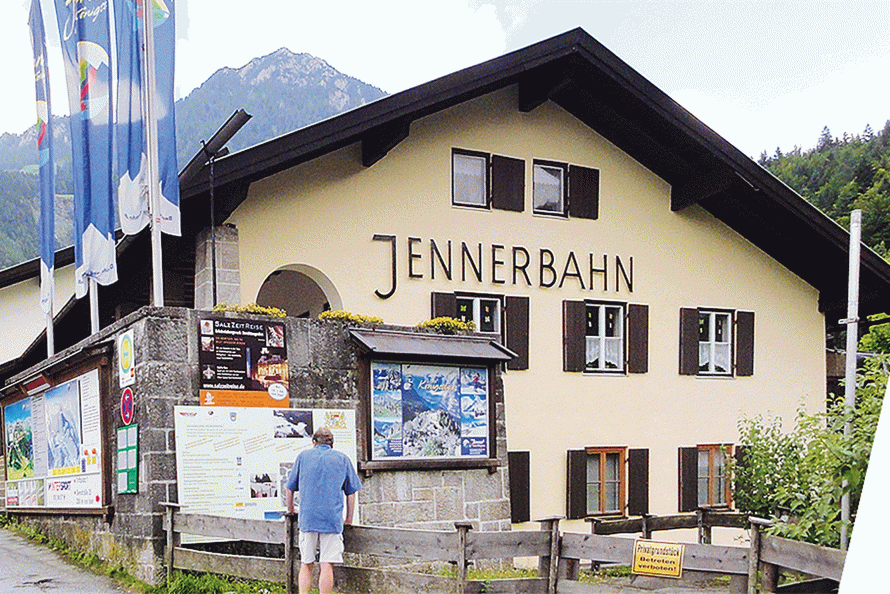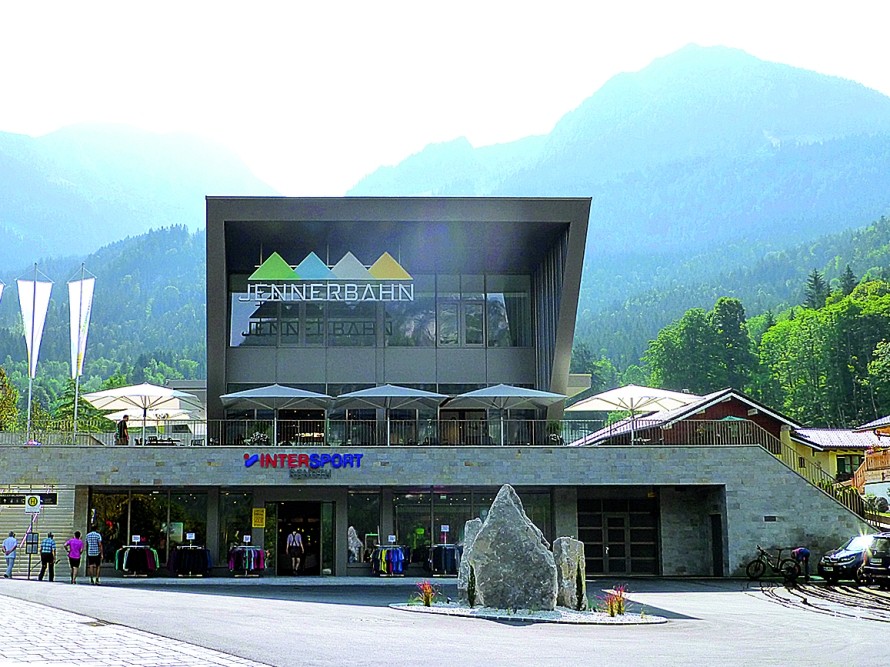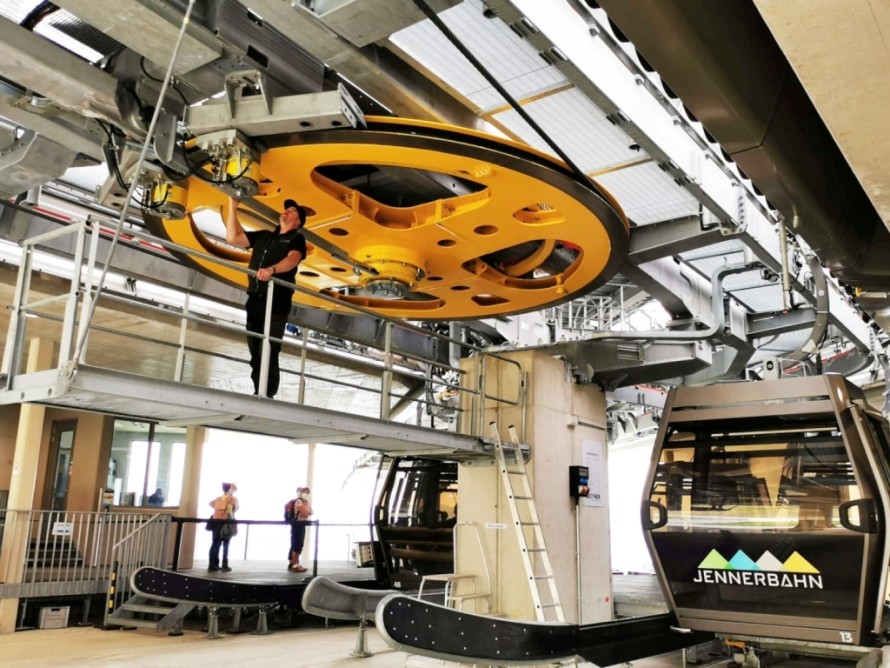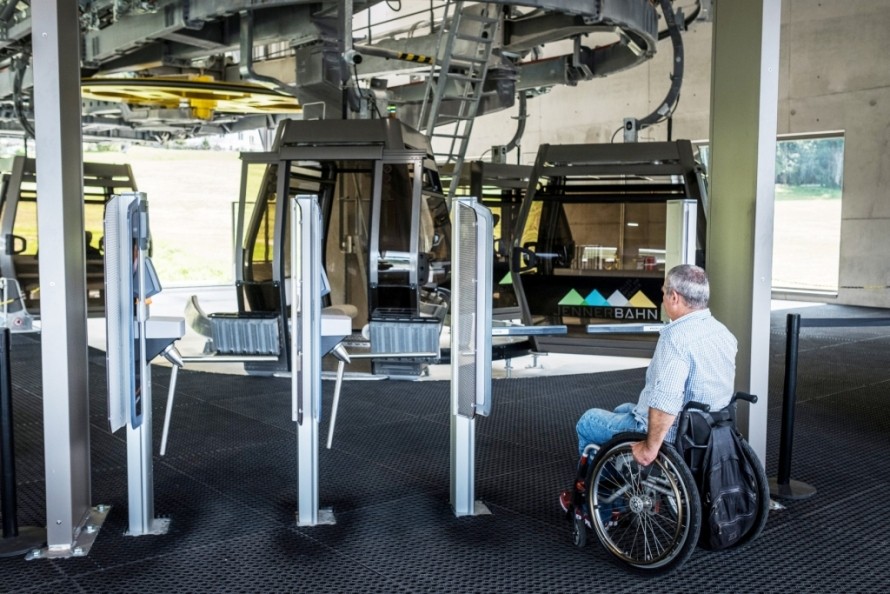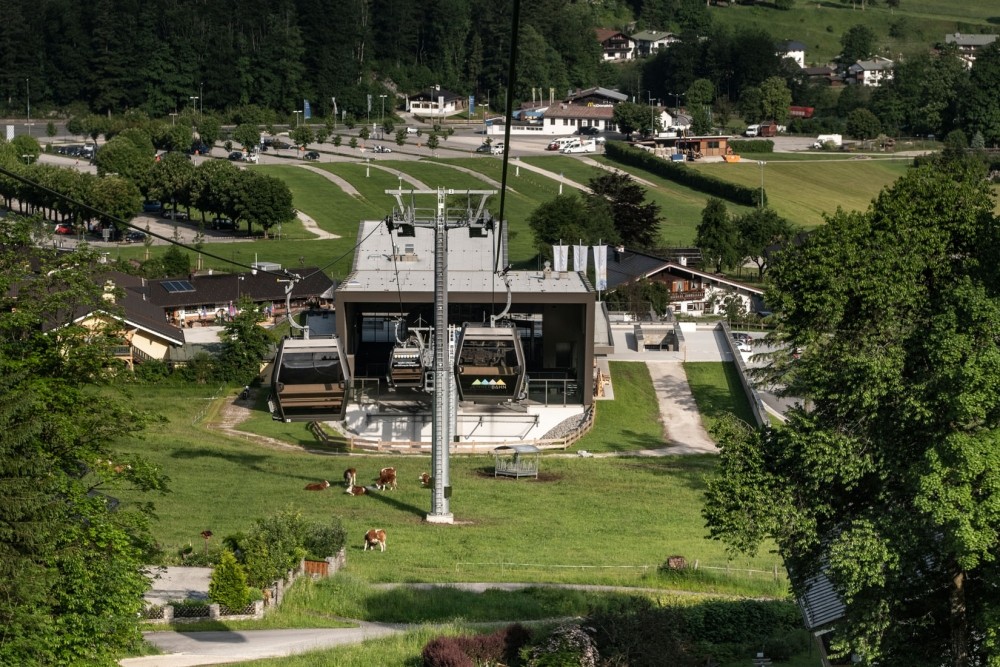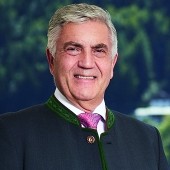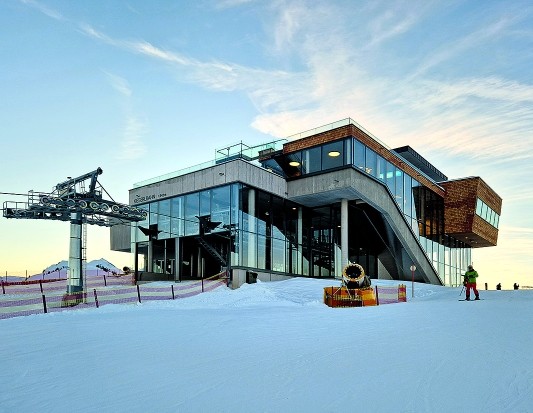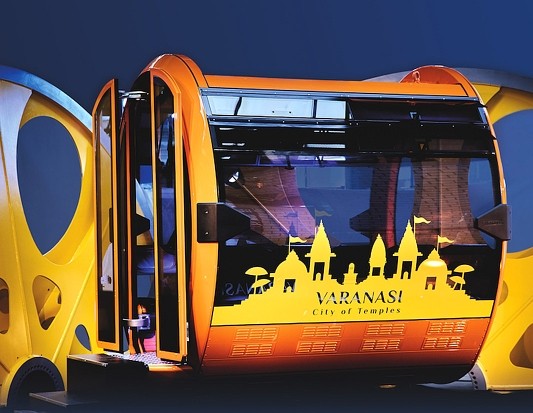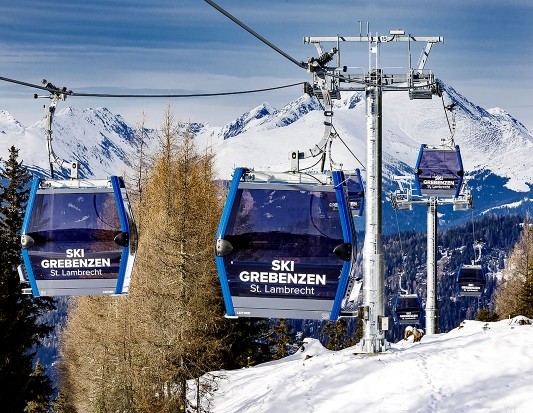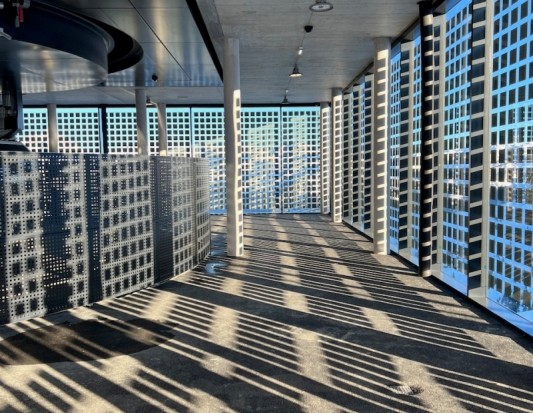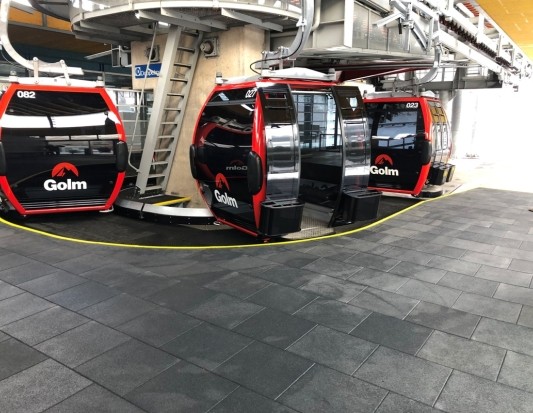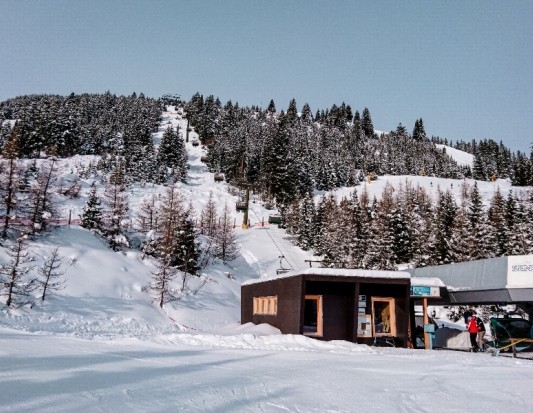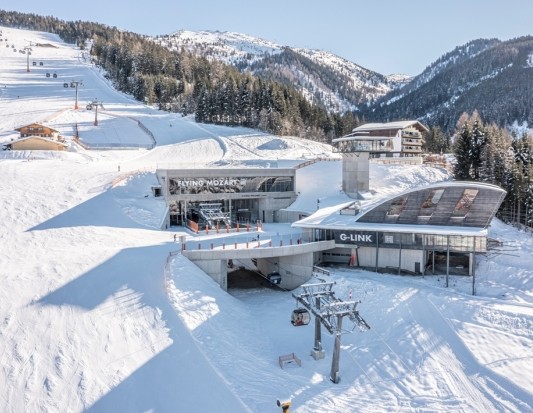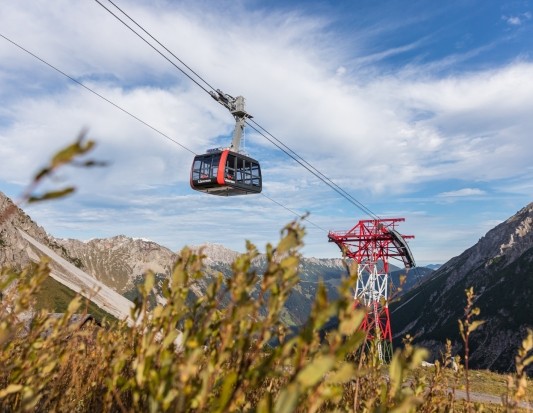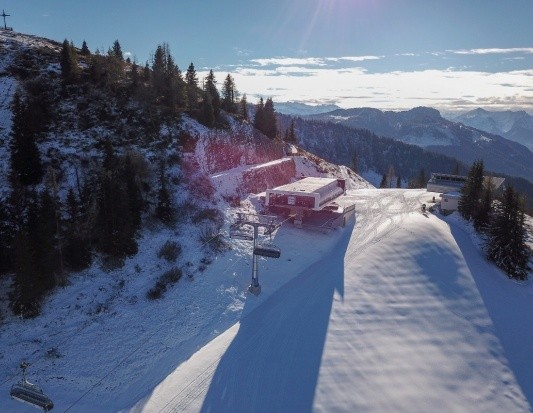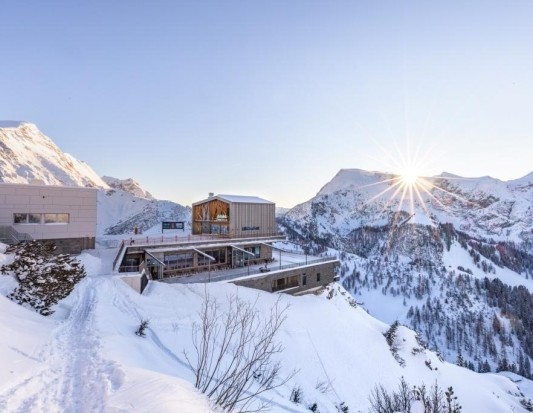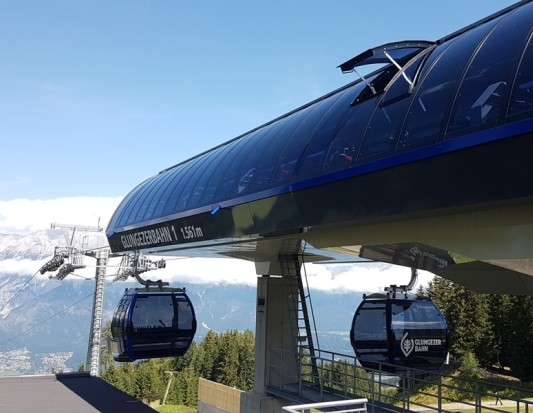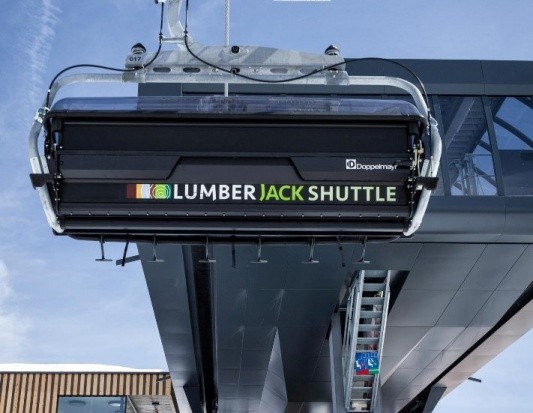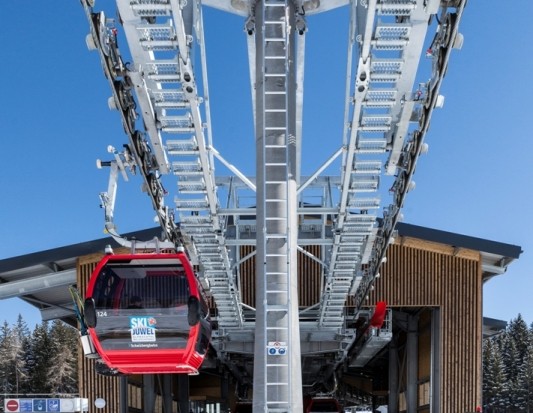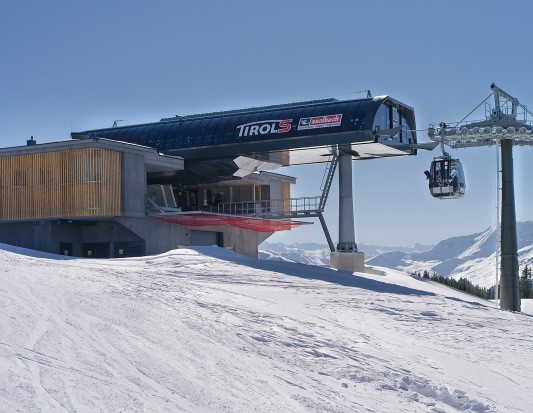JENNERBAHN BERCHTESGADEN
Berchtesgaden
The Jenner, located near Berchtesgaden, has become a coveted destination for discerning travelers seeking a unique experience amidst pristine nature and the stunning backdrop of Lake Königssee. However, the development of new ropeways in this area posed significant challenges, including opposition from conservationists and stringent environmental conditions, requiring unwavering determination, expertise, and additional investments.
Recognized as a slogan for the adventurous ski area, "Real connoisseurs go to the Jenner." With the comprehensive revitalization of the entire region, this statement holds true. Skillful execution by knowledgeable professionals led to the successful transformation of the ropeway system.
Initial circumstances revealed that the Königssee attracts one million visitors annually, with the idyllic bottom station of the Jennerbahn cable car situated near the lakeshore. Since 1953, a two-section gondola has transported passengers to the mid station at an elevation of 1200 meters above sea level and further to the top station at 1800 meters. However, the existing transport capacity of 500 persons per hour fell significantly short. Long queues would form at the bottom station during both summer and winter seasons.
To supplement the offerings in this partially steep and challenging ski area, three chairlifts were in operation: the Mitterkaserbahn, a two-seater chairlift constructed in 1980, the Krautkaserbahn (built in 2013), and the Jennerwiesenbahn (built in 1986).
Awakening from dormancy, cable car planner Stephan Salzmann reflects, "Despite Berchtesgaden's rich tourism history, the entire area seemed to have been in a state of slumber." For quite some time, no significant developments occurred in this region nestled along Lake Königssee.
Recognizing the immense potential of the area for both summer and winter activities, tourism entrepreneur Peter Hettegger, along with project developer Martin Harlander and building contractor Georg Hinterleitner, decided to invest. The Hettegger family business initially constructed the upscale 4-star Hotel Edelweiss in Berchtesgaden in 2010. Subsequently, local hotel operators followed suit, leading to an increase in the quantity and quality of available accommodations. Alongside these developments, Hettegger and his partners assumed responsibility for the mountain railroads.
Balancing nature preservation and enjoyment, the planning for facility renewal began in 2015. AEP Planung und Beratung GmbH from Schwaz prepared plans for slope adaptation, construction roads, and the technical snowmaking system. Salzmann Ingenieure from Bregenz undertook the ropeway planning, a particularly complex task considering the ski and hiking area's location, nestled amidst a nature reserve.
The challenge lay in achieving a significant increase in visitor numbers while respecting environmental concerns. Salzmann Ingenieure devised a plan that retained the existing route for the construction of both sections of the Jennerbahn and the Mitterkaserbahn, adhering to urgent requests from nature conservation organizations. They designed the Jennerwiesen ropeway to make optimal use of the flatter slope area near the mid station, offering a desirable experience for beginners and families. The new, more expansive station buildings were cleverly integrated into the slope, blending harmoniously with the awe-inspiring landscape. The architectural aspects were handled by the Harlander office.
Diverse Utilizations
The newly upgraded Jennerbahn has significantly expanded its capacity, now transporting 1600 people per hour up the mountain, more than three times its previous capacity. The cabins of the cable car can accommodate up to ten passengers and provide ample space for items such as baby carriages, bicycles, and wheelchairs. Moreover, a special vehicle has been introduced to transport flying kites.
To address the parking needs, Salzmann Ingenieure and Leitner Ropeways collaborated to devise a flexible and space-efficient solution. The parking facilities are strategically located in a combination of a basement station and a station parking area at the mid station, ensuring minimal impact on the landscape. Additionally, the bottom station features a station garaging system for half of the vehicles operating in the first section. The sections can be independently put into service or taken out of service as needed. The spacious and architecturally distinctive bottom station also houses various facilities such as offices, a ski depot, a ticket office, and a store.
At the new top station, a 250-seat restaurant has been established, providing visitors with a delightful dining experience. The impressive panorama terrace can accommodate an additional 450 guests, offering breathtaking views. Furthermore, the Jenner boasts seminar rooms suitable for company workshops, and its wedding hall makes it an ideal venue for weddings. The expertise of the owners in the fields of tourism, gastronomy, and architecture has been instrumental in creating these exceptional facilities.
In place of the old 2-seater chairlifts, modern detachable 6-seater chairlifts have been installed. The Jennerwiesen ropeway provides enhanced comfort with weather protection hoods and child safety locks, making it popular among families. On the other hand, the Mitterkaserbahn, designed for more advanced skiers, offers a somewhat simpler experience. Stephan Salzmann, the ropeway planner, explains that careful consideration of costs and benefits was undertaken when selecting the ropeway technology.
However, the project faced significant challenges, primarily due to strong headwinds at the Jenner location. The German environmental group BUND Naturschutz raised complaints and objections throughout the approval process and the entire construction period. For instance, certain areas along the construction road were off-limits during spring to protect bird species during their breeding and courtship periods. Additionally, work had to be halted at specific times of the day.
Entrepreneur Peter Hettegger reflects on the difficulties faced during the construction phase, stating, "We were unable to carry out construction during the optimal time." The construction of the stations was particularly affected, and as a result, some work had to be rescheduled for the winter season, presenting a significant challenge for the construction company.
Consequently, the entire project experienced a one-year delay. The first section of the Jennerbahn was inaugurated in August 2018 after 14 months of construction, while the second section was completed in June 2019. The renewal of the Jennerwiesen and Mitterkaser chairlifts took place at the beginning of the winter seasons in 2018/19 and 2019/20, respectively.
Although the overall project costs increased to 57 million euros due to stringent requirements and resulting delays, the ropeway technology was successfully implemented. Peter Hettegger commends the role played by Salzmann Ingenieure, stating, "They made a significant contribution. The tender process, negotiations with Leitner Ropeways, and the overall construction management were extremely positive. Everything proceeded smoothly."
Harnessing the Full Potential of the Area
The initial seasons of 2018 and 2019 served as a testament to the success of the project. Visitor numbers experienced a significant surge, with a nearly 50% increase to 250,000 individuals during the summer period preceding the onset of the pandemic. In the winter season, the number of visitors rose from 70,000 to 100,000.
The expanded capacity of the Jennerbahn has proven its value even during the challenging years affected by the pandemic. Thomas Hettegger, the current head of the company and board member, remarks, "The experience has been exceedingly accommodating. Despite the requirement to limit our 10-person gondolas to only three occupants, we encountered minimal waiting times."
Furthermore, the additional amenities such as the seminar rooms and wedding hall have received positive feedback. During the very first summer, 60 wedding ceremonies were conducted in these remarkable facilities. There has been a notable demand for corporate events as well. Looking ahead to the post-pandemic era when visitors from all corners of the world are anticipated to return, Thomas Hettegger expresses his confidence, stating, "The feedback from visitors is overwhelmingly positive, with a satisfaction rate of 99.9 percent. I eagerly await the realization of our full potential, which I hope will occur this summer."
